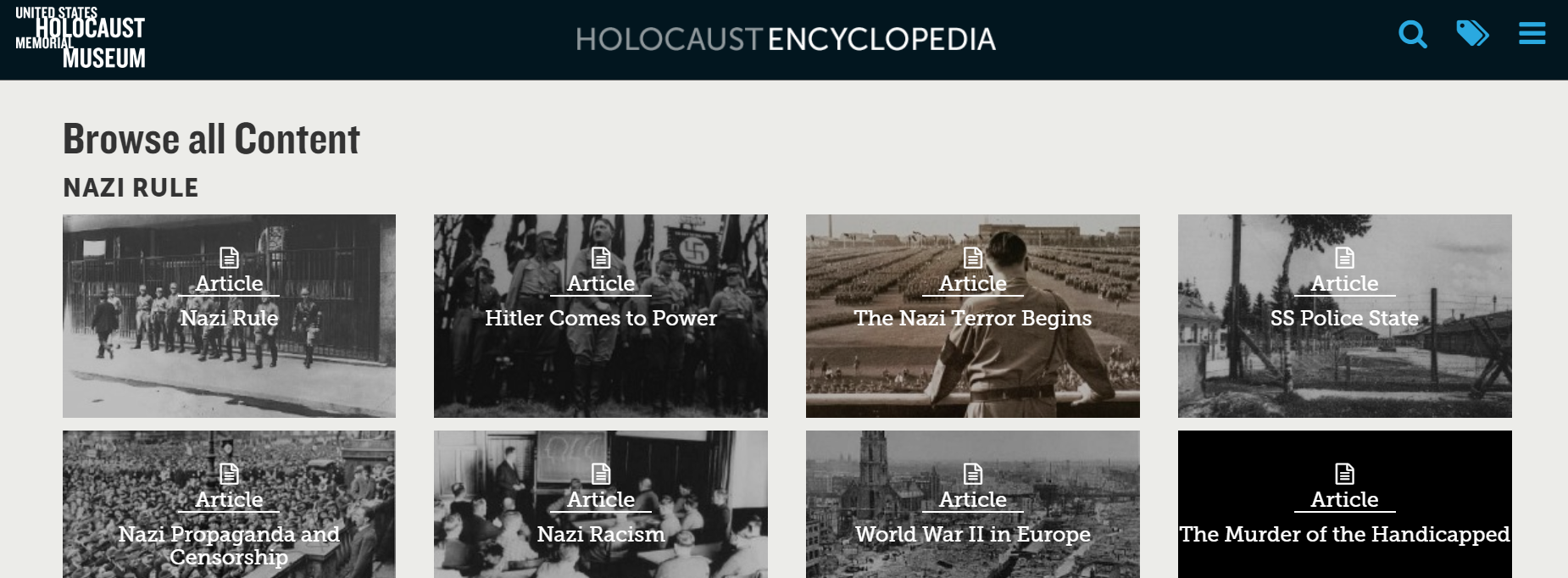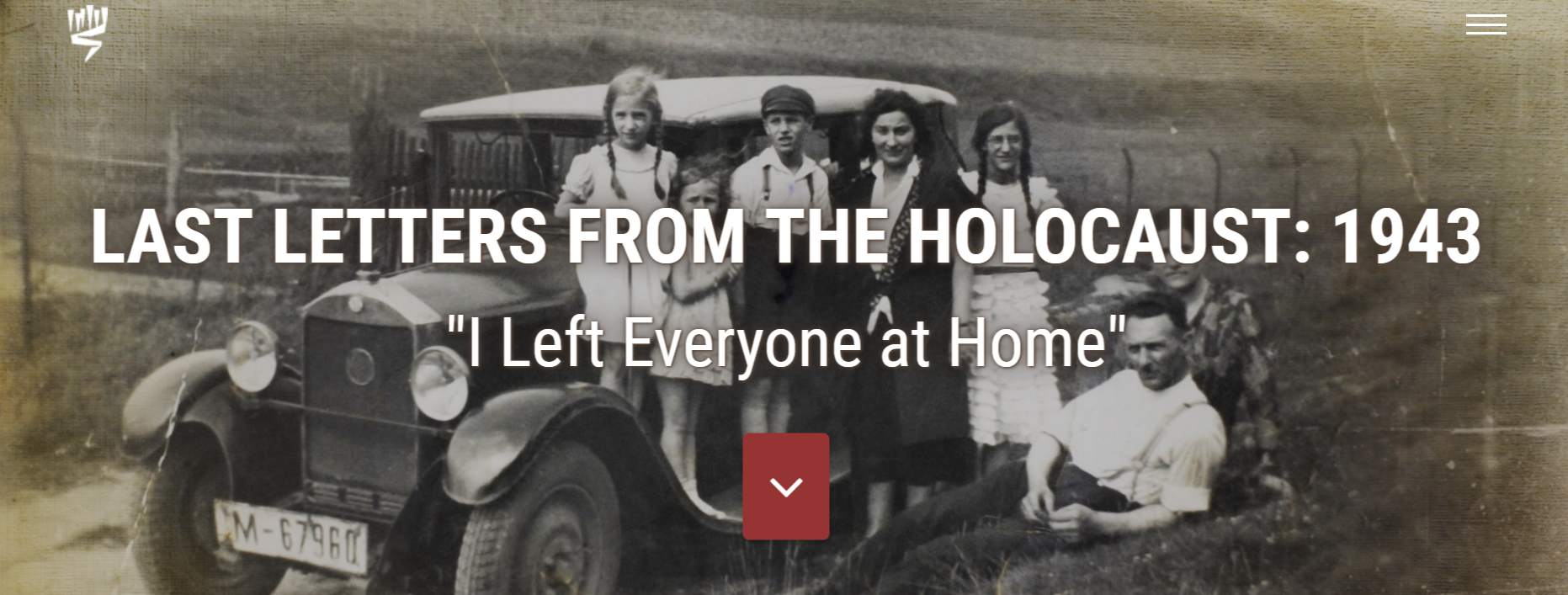The Holocaust. Primary Sources
What are primary sources?
- They are created by someone who observed or participated in the event or era
- They are a personal observation of the event or era; a first-hand account.
- They are records of the experiences of those involved
- Primary sources often show the event and its effects
- Photographs, film, letters, memoirs, newspaper reports and advertisements, administrative documents such as birth and death certificates, boarding passes, military orders, recollections.
- Read more about primary sources on the University of New South Wales libguide

- Organized by theme, this learning site presents an overview of the Holocaust through historical photographs, maps, images of artifacts, and testimony clips. It is a resource for middle and secondary level students
In the personal letters from the Holocaust period, we find descriptions of the sufferings in their daily existence and the hardships endured by Jews wishing to receive news of their loved ones from whom they were forced to part. The letters reveal the fateful decisions they were forced to make in order to survive, including those made by parents forced to separate from their children.
This exhibition comprises ten last letters. Two of them were written by daughters to their parents. The girls were murdered, but the parents survived.


- The Daily Telegraph - Belsen Concentration Camp
A TROVE search showing newspaper articles from NSW about the Holocaust and the horrors of the Belsen concentration camp. Change the search term at the top of the screen to find articles about other aspects of the holocaust.
- Hear interviews or read the transcripts from audio recordings at the "British Library, Voices of the Holocaust" You can listen to the testimonies of Holocaust survivors. Further interviews with Jewish survivors of the Holocaust can be found on the Sounds website.
